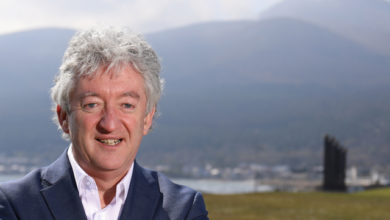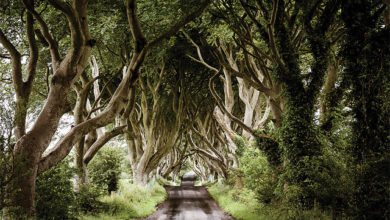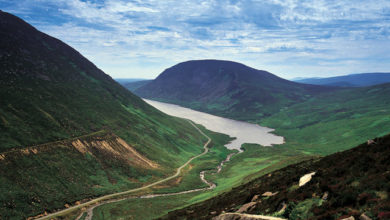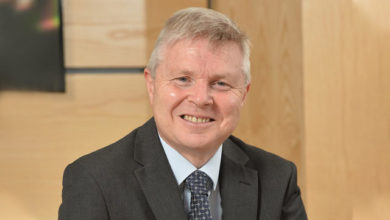A strategy for growth
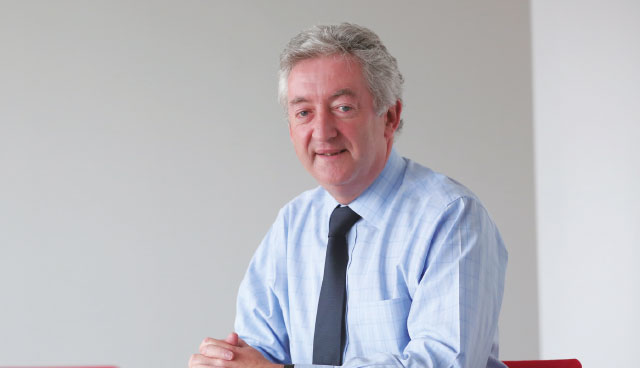

Tourism Northern Ireland CEO John McGrillen discusses plans to further grow Northern Ireland’s performance in the global marketplace through focusing on increasing visitor numbers and expenditure from outside of the region.
The economic contribution of visitors from outside of Northern Ireland to the region is almost three times greater than the value of the domestic market, John McGrillen explains, as he outlines plans to grow the tourism sector with a fresh focus on attracting people to Northern Ireland.
The Tourism NI CEO is boosted in his mission to raise the economic value of out of state visitors to Northern Ireland from £614 million to £1 billion by 2025 by encouraging figures for the sector in 2016. These largely outlined increases from every market including 36 per cent from the Republic of Ireland, 7 per cent from Great Britain, 15 per cent from Europe and 9 per cent from the USA.
The overall figures for the Republic of Ireland mask a relatively poor performance for the first half of the year before a focused campaign by Tourism NI and changes in the exchange rate following the Brexit referendum led to large uplifts in visitor numbers and expenditure in the second half of 2016.
McGrillen is confident that the results of the second half of the year can be carried in to 2017 and built upon over future years. However, the strategy developed to aid this growth is still awaiting political sign-off following the collapse of the Northern Ireland Executive. He says: “The logical process was to agree a Programme for Government, then the Industrial Strategy and then a Tourism Growth Strategy. Increasing the economic input of the tourism sector is an integral part of the previous two, and while the industrial strategy managed to squeeze out the door before the Assembly collapse, that didn’t happen with the tourism strategy.”
The hope is that the strategy will be signed off when an Executive reforms. Explaining its ethos McGrillen outlines: “Essentially the strategy is set in the context of aiming to be more competitive internationally. We recognise the importance of the domestic market, particularly outside of the major tourist destinations such as Belfast or the Causeway Coast and during the off-season, however there is limited potential for growth domestically. Therefore, if we want to develop the economic benefit that tourism can bring we need to concentrate on growth from external markets.”
To reach the £1 billion target, the strategy is likely to focus on six key pillars, all of which will aid the overall aim of attracting more people to Northern Ireland, ensuring that they stay longer and increasing the amount they spend.
Market focus
McGrillen highlights that Northern Ireland will benefit from tailoring its tourism offering to reflect the wider international desire for travel. Recent statistics from the World Tourism Travel Council indicate that tourism is expected to grow by around 4 per cent per annum across the globe to 2026. He believes Northern Ireland will secure the majority of its growth from its current core markets but that there will also be a significant opportunity from new and emerging markets such as China, India and other parts of Asia. “For us to deliver on the strategy we need to perform well in our core markets but we also need to exploit the opportunities that are arising out of new markets.”
Segmentation of the market is critical to ensuring that Tourism NI simultaneously develops the right marketing content for a receptive audience and ensures that it reaches its target. McGrillen explains that collaboration with Tourism Ireland has identified the three key groups in which there should be a greater focus on attracting. These include the culturally curious; young families looking to escape their daily routine; and social energisers – people who are looking for an urban experience.
“With greater clarity on who we are targeting then we can develop our products and marketing to meet their needs and demands. With our push to increase visitor numbers market focus is absolutely critical in the first instance.”
Experience building
A large part of attracting those potential visitors to Northern Ireland lies in the presentation, explains McGrillen. Pointing to the success of Ireland’s Wild Atlantic Way, he states that simply allowing visitors to find the highlights of Northern Ireland by their own steam is not enough. “We are currently looking at how we can package the Northern Ireland tourism offer in a way that complements existing destinations on the island of Ireland but also to compete with those other regions so that we are at the forefront when visitors are deciding where to spend their money.”
While marketing will help promote Northern Ireland’s highlights, McGrillen is keen to state that the development of new, compelling “world class” experiences to meet consumers’ expectations is probably the most important issue. The success of places like Titanic Belfast and the Giant’s Causeway has demonstrated the benefit of investing in world class products but their success is now raising questions around sustainability of some of Northern Ireland’s most popular attractions. He explains: “We need to distribute people around Northern Ireland and give them a reason to visit other areas in addition to those main attractions. A large part of this is developing product in those areas which will match with the desires of those incoming visitors. So, it may be developing more of an experience around the landscape of the Mourne Mountains or the Lakes of Fermanagh or developing the cultural product in the likes of Derry~Londonderry, Armagh and Downpatrick. We also need to build on the success of the Year of Food and Drink to ensure that people can experience the quality of product which we have to offer right across Northern Ireland.”
Access
Despite the Republic of Ireland being a direct competitor in terms of visitor numbers, McGrillen acknowledges the international links offered by Dublin are a huge benefit to Northern Ireland tourism but is also aware of visitors’ tendencies to concentrate in the area which they land. One of the challenges for the tourism sector in Northern Ireland is trying to ensure greater direct access to the airports in Belfast and Derry.
Once visitors are here, a further challenge is keeping them here for longer. One way of doing this, he suggests, is to offer immersive experiences. “People no longer want to simply observe different cultures, they want to be part of it and engage with local people and their stories. Part of our focus is packaging some of the things that we already have into a bigger experience that visitors can see as a three or four-day itinerary, which is easy to put together and easy to purchase.”
McGrillen points to the Year and Food and Drink as a perfect example of exploiting unique elements of Northern Ireland. For the £2 million that Tourism NI invested in the initiative, the organisation estimates that around £50 million was generated in positive PR. In addition, over 17 new food tours were developed alongside numerous festivals which have provided Northern Ireland with a platform to further build on. Praising the impact that events which encourage mass visitors have had on improving Northern Ireland’s reputation, such as the Giro d’Italia in 2014 or the hosting of the Irish Open in 2012 and 2015, he is also aware of a need for further development of the North’s unique events. “Increasingly what we need to do is pick out those things that are unique to Northern Ireland and can help build the brand further. By this I mean events such as the North West 200 or the Auld Lammas Fair in Ballycastle, things that you won’t find anywhere else in the world and incorporate these into our product marketing.”
Investment
McGrillen points to the attractions of Titanic Belfast and The Giant’s Causeway as examples of success due to significant investment and contrasts these with the underinvestment that is evident in Northern Ireland’s museums and galleries. Having identified the “culturally curious” as the largest potential market segment for attracting visitors, underinvestment in our cultural and heritage assets is a major problem and needs to be addressed.
McGrillen explains that incorporating new technologies, such as augmented reality and virtual reality is critical to ensure Northern Ireland is challenging its competitors. “There is a lot of expertise in the area of new technologies within Northern Ireland but to date we haven’t fully utilised this expertise in our own industry to help develop experiences.” He adds: “I believe there would be a great appetite for things like walking St Patrick’s Way alongside St Patrick, or if you look at the filming locations for Game of Thrones heightening the visitor experience with new technologies.”
Commercial focus
Investment in developing business and driving a greater commercial focus for Northern Ireland requires greater commitment, explains McGrillen. “There has been a very limited investment in developing businesses within the tourism industry. We often hear this mantra that our industry is less well developed when compared to other regions but the truth is that we have never been provided with the resources to develop the capacity of the industry in the same way that other sectors have been supported.”
The strategy is likely to endorse the creation of a Tourism Growth Fund, a recommendation made by John Hunter as part of his review of tourism structures in Northern Ireland in 2014. McGrillen suggests that this should not be solely focussed on capital development but also looking at supporting the variety of SMEs and micro-enterprises which make up the tourism eco-system in a way that has never been done before.
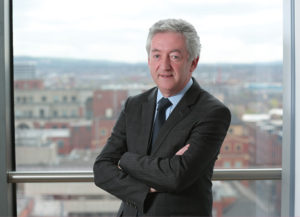
He explains: “Typically our larger accommodation providers can avail of support via Invest NI but there needs to be a focus on also offering direct support to small businesses, as opposed to simply inviting them to participate in workshops etc. We want to address their needs too, and we need to be innovative, offering ‘webinars’ or utilising digital technology to reach those businesses who simply aren’t able to lose a day’s income or free up that time.”
McGrillen has called for greater focus on commercial orientation from the public sector. Acknowledging the difficult role that local authorities play in delivering a broad range of services to the citizen, he is aware of the ease in which council-run attractions often get lost amid the overall performance measures. Pointing to Tourism NI’s work with Belfast City Council at Belfast Waterfront, where a commercial entity was established to operate the facility, McGrillen hopes to encourage more public sector provision to be commercialised in the near future, with the aim of driving up competitiveness and securing more business.
Digital
All businesses, whether public or private need to get to the stage where digital booking becomes standard procedure, stresses McGrillen. A digital presence is critical to securing and retaining business in today’s tourism world.
He explains that visitor engagement is critical but needs collaboration across the industry. This ranges from the creation and distribution of marketing content to attract a visitor through to how they are communicated with when they arrive and the provision of information to allow them to choose what they do and where they go whilst they are here. “There is also a great opportunity for the Northern Ireland tourism sector to collect data from our visitors and allow us to continually shape our products and services to meet consumer demands. Our ability to master digital technology and maximise the use of it is going to be critically important to Tourism NI as an organisation and to the industry as a whole.”
Future
While McGrillen hopes that the strategy will be critical to shaping the future of Northern Ireland tourism, he is conscious that a number of factors need to be in place for it to be successful. He expands: “We can’t do any of this if we don’t have the right people with the right skills. The feedback that we are getting from the industry is that skills is a very challenging issue at this point in time and there is a gap in the education and provision being provided and that which is required to meet the needs of the industry. There is an issue for the Department for the Economy to ensure that the right skillsets are available to drive growth.
“The uncertainty around Brexit has not helped with this. Talented non-nationals within the industry are unsure about whether they will be allowed to remain here. Reports from the industry suggest that the people who have invested in training and skilling themselves are looking at relocating to the Republic of Ireland, Spain or France for example. Getting some certainty around Brexit is going to be important in this domain.”
Sticking with Brexit, McGrillen says their efforts to sell Northern Ireland as part of an all-island holiday destination could be impacted by the existence of a hard border and emphasises that concerns around attracting global conferences have already emerged in the form of worries by organisers that delegates may have to fill out additional visa forms if delegates are travelling via Dublin Airport.
McGrillen also points to the potential impact of rising inflation rates in the UK and a subsequent drop in disposable income as factors that cannot be ignored. On the flip side, the tourism industry in Britain is suggesting that more and more people are taking holidays at home and this is potentially beneficial for Northern Ireland as it is largely viewed as part of the overall domestic market.
“As a result, Tourism Ireland have reapportioned their resources, focussing more on the States, mainland Europe and China and less so on the UK. The risk for us is that we are much more dependent on the UK market than the Republic is, so we need to ensure that we are going to see a return from these new markets which will equal or exceed any potential loss of business from the UK.”
Despite the uncertainty McGrillen remains very optimistic for the remainder of 2017. Visitors arriving onto the island of Ireland from North America are up 26 per cent over the first quarter of the year and occupancy levels and forward bookings for hotels in Northern Ireland are looking very positive. “I’ve no doubt that our target to grow export sales to £1 billion by 2025 is achievable but, in the absence of a roadmap for the future that we can all buy into, our challenge is significantly greater,” he adds.

